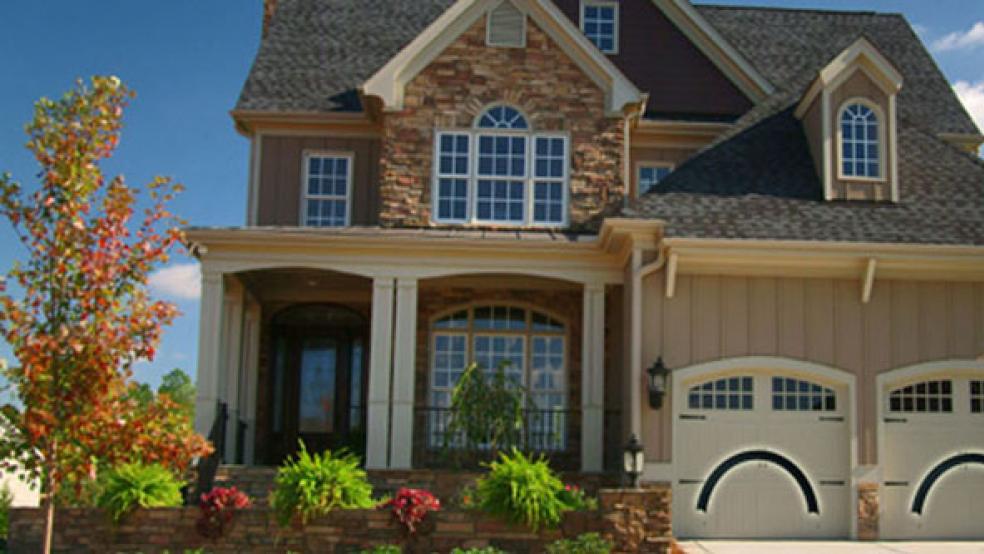The housing sector barely inched upward in November following two months of decline and new data points to signs of continued strain.
Privately-owned (one building with several units) housing starts rose by 3.9 percent to 555,000, which was on target with expectations, according to a monthly report from the Commerce Department. Single-family (one family in one home) housing starts in November were up 6.9 percent to 465,000, from the revised October figure of 435,000. Even with the gain, housing starts are just 16 percent above the 477,000 unit pace from April 2009, the lowest point since records were first kept back in 1959.
Although the US economy grew 2.5 percent in the third quarter and has showed signs of gaining traction, experts say the new data indicates the housing sector has been stalling. While there is month-to-month volatility in the Commerce Department reports, Paul Dales of Capital Economics warned, “housing starts have pretty much been flat-lining at the depressed level of between 500,000 and 600,000 for two years now.” Annual trends looking at the pace of the housing sector rather than month-to-month growth indicate that there is relatively no strength in housing market right now.
In 2006, housing starts peaked at 2.2 million. They fell off between 2006 and 2008 and hit below 600,000 in 2008 where they remain today.
Building permits, a proxy of future demand, declined 4 percent in November to a seasonally adjusted rate of 530,000 — the lowest levels since April 2009, suggesting that housing starts may even fall back in the coming months, Dales said. Experts say the near-term outlook for new construction remains weak.
Privately-owned housing completions declined 14 percent to 513,000, below October’s revised estimate of 597,000. “Housing completions look even worse than starts, suggesting that builders are feeling little pressure to put up homes,” said Celia Chen, an economist with Moody’s.
The overall pace of construction remains slow as all three measures from the Commerce Department were down year over year. Analysts expect the shortage of positive economic activity in housing sector to be a theme over the next couple of years.
“While a stable pace of residential construction is better than a declining pace, the economy’s recovery will be hindered by construction that is crawling,” Chen said.
Upward Push by Non-Building Construction
The value of new construction starts edged up two percent in October, to $413.8 billion, according to a separate analysis by McGraw-Hill Construction. The report said a majority of the upward push was provided by non-building construction, comprised of public works and electric utilities, with an added lift coming from modest growth in housing. McGraw-Hill Construction estimated that through the first ten months of 2010, total construction was valued at $350.4 billion, down three percent from a year ago.
“The emerging recovery for housing has proven to be halting, and commercial building is still in the process of bottoming out,” said Robert A. Murray, vice president of economic affairs for McGraw-Hill Construction.
Home builder confidence doesn’t paint a brighter picture either. A recent National Association of Home Builders (NAHB) confidence index remained unchanged at 16 from last month, further suggesting builders remain cautious as job gains remain weak which ultimately keeps housing demand low.
"Builders are bracing themselves for a slow holiday season as a number of factors continue to cause uncertainty among consumers and builders alike," said NAHB chairman Bob Jones, a home builder from Bloomfield Hills, Mich. "While the Housing Market Index is adjusted for seasonal factors, the typical cold-weather slowdown in sales activity is being accentuated by ongoing weakness in the job market, the rising number of foreclosures and short-sales, and very challenging credit conditions for both builders and buyers."
In another report out Thursday, home prices declined 2.43 percent for a third straight month in October, according to CoreLogic, a research firm that tracks home prices. Year-over-year home prices declined 3.93 percent, signaling that home prices are further deteriorating each month.
"We are continuing to see the weakness in home prices without artificial government support in the form of tax credits. The stubborn unemployment levels and seasonality are also coming into play," said Mark Fleming, CoreLogic’s chief economist. "When you combine these factors with high shadow and visible inventories, the prospect for a housing recovery in early 2011 is fading."




